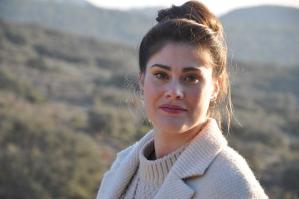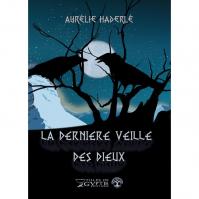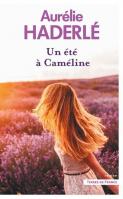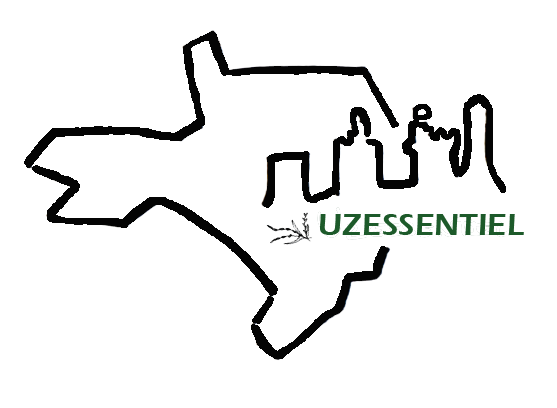Meeting with French novelist Aurélie Haderlé
- Par nbesse
- Le 29/06/2023
- Dans Interviews and portraits
As her latest book Un été à Cameline has just been publised in the collection Terres de France of French editor Presses de la Cité, we had the idea to push the door of Aurélie Haderlé's writing room to discover the world of this young novelist born in Nîmes.

LET'S MEET
Hello Aurélie,
Thank you for accepting the invitation from the editors of UzEssentiel.
Your first book, Dormance, was published in 2018. But we assume you've been writing for much longer than that, haven't you?
I've always wanted to evoke emotions telling stories. I've been writing since I am old enough to do so!
When I was a child, I used to tell my brother and sister stories to entertain them. They were serials built around fixed characters. Later, I decided to put them down on paper. Then I started writing short stories.
I entered short story competitions to see if my stories would appeal to readers. As I won several competitions, it gave me the courage and confidence to write novels.
Do your studies in classics and ethnology have been of some help to work on your subjects? Classics for the writing, ethnology to get a better grasp of your characters, the atmosphere...
To write you need to read a lot! My studies in classics gave me the literary culture I needed to be able to conceive a story, work out its chronology, create the characters, write the dialogue... but also to write fluently, using writing devices such as figures of speech and so on...
Above all, my ethnology studies have taught me to be curious about the world around me. I write regional novels, in which I take a very close interest in the tangible and intangible heritage of the region in which the story I'm writing is set.
I do extensive research into the specific skills and practices of that region before writing anything. For example, to create the character of the hero of Un Eté à Caméline, Gabriel le murailler (a specialist in dry stone masonry, i.e. stones assembled without mortar), I interviewed specialists in the field and did a lot of research. I surveyed the landscapes of Provence to study the bories, calades, restanques, walls and low walls... to be able to describe them accurately and relevantly.
 Your first book Dormance (2018), and your second La dernière veille des Dieux (2021), were both aimed for teens and set in the Viking world.
Your first book Dormance (2018), and your second La dernière veille des Dieux (2021), were both aimed for teens and set in the Viking world.
How did you make the transition between this very historical context and the atmosphere of your current books, more romantic and set in Provence (Un été à Caméline (2023), L'un pour l'autre (2019) and Cévennes Le cœur des fileuses (2021), a title that revisits the history of silk spinning)?
In my reading life, I read (almost) everything: historical novels, contemporary novels, fantasy, science fiction... I do read anything!
When it comes to writing, it's the same: I don't shy away from any literary genre. As soon as I come across a story that I'm passionate about and that moves me, whether it's set in my own cultural universe or in a cultural universe that's far removed from mine in time and/or space, I put it down on paper without asking myself any questions. It's all a matter of meeting the different stories I want to tell.
 Your interest in the culture and heritage of our region has been widely acclaimed. Why this choice?
Your interest in the culture and heritage of our region has been widely acclaimed. Why this choice?
I was born in Nîmes and lived there for twenty years. I've always been fascinated by the rich, vibrant heritage of the Gard, with its long and fascinating history.
I also spent eight years in Montpellier. I've loved every minute of my life in Occitanie, where life is gentle and joyful. The colour of the sky, the perfumes, the light, the sound of the cicadas, the rhythm and accent of the local voices... I love it all! And when you love something, you want to share it with others, so that they can have a taste of your happiness.
To illustrate my point... I'd like to share with you an extract from my latest book, Un Été à Caméline. The heroine, Naïs, is going through a difficult time. She's sad and lost. One evening, she finds herself sitting on the terrace of her village café in the company of the regulars, and she finds herself savouring the simple pleasures of a summer's evening... "She let herself be lulled by the voices of the people singing. She realised just how much she had missed this atmosphere. Of course, she had missed the Provençal sun every day of her life in Paris. That beautiful golden sun overlooking a clear, spotless blue sea. She had missed a lot the southern light, especially in the evening. The light that creates long shadows across the white gravel. She missed the cries of the swifts hunting. The olives bristling with toothpicks set out in brightly coloured bowls for the aperitif. The sound of ice cubes at the bottom of the soon-to-be-empty glass, and the rush to refill it. Because it's the best moment of the day and everyone wants it to last".
Your portraits of women have also been praised. How have these characters introduced themselves to you and interacted with you?
My aim is to create strong, striking female characters with strong personalities and a set of values that are more or less close to my own. To create the character of Eulalie Bastide, who finds herself at the head of a silk spinning mill in the Cévennes in 1911 in Le Cœur des fileuses, I drew inspiration from female figures in French trade unionism, such as Lucile Baud, who left a long personal account of the living and working conditions of silk weavers in her region. Eulalie came to me as I was reading the fine book Mélancolie ouvrière by French writer Michelle Perrot, a leading historian of work and women.
To create Naïs Bagnol, the young heroine of Un Été à Caméline, I drew inspiration from young women I knew, and from myself too. Naïs is going through a painful existential crisis because her life is not fully satisfying her. She's been through some difficult things and feels like a stranger in her own existence... These are difficult questions that we all face at key moments in our lives.
What is your method for starting a novel?
First of all, I come across a story. That story takes over my mind... I can't think of anything else! I define the outline and sketch out the characters. Then I get down to the thick of it: I draw a timeline of the story, I write a detailed outline of each chapter, I draw up a profile of each character (physical and moral description, personal history, link with the other characters, purpose, destiny in the novel). Once everything is clear, I start writing the novel.
Of course, after a while, the characters begin to grow, to take on more substance, and to escape me. They start to 'live' on their own... I often say to myself: "But he/she could never say/do such a thing! And the story I'm telling takes another turn"... Writing a novel is a demanding, exciting, sometimes exhausting, but always stimulating adventure.
Many thanks to Aurélie Haderlé for her collaboration on this article and for the visuals.
Good to know: Meet Aurélie Haderlé at the Lussan se livre book fair, organised by the Maison de la presse d'Uzès, end of August.






